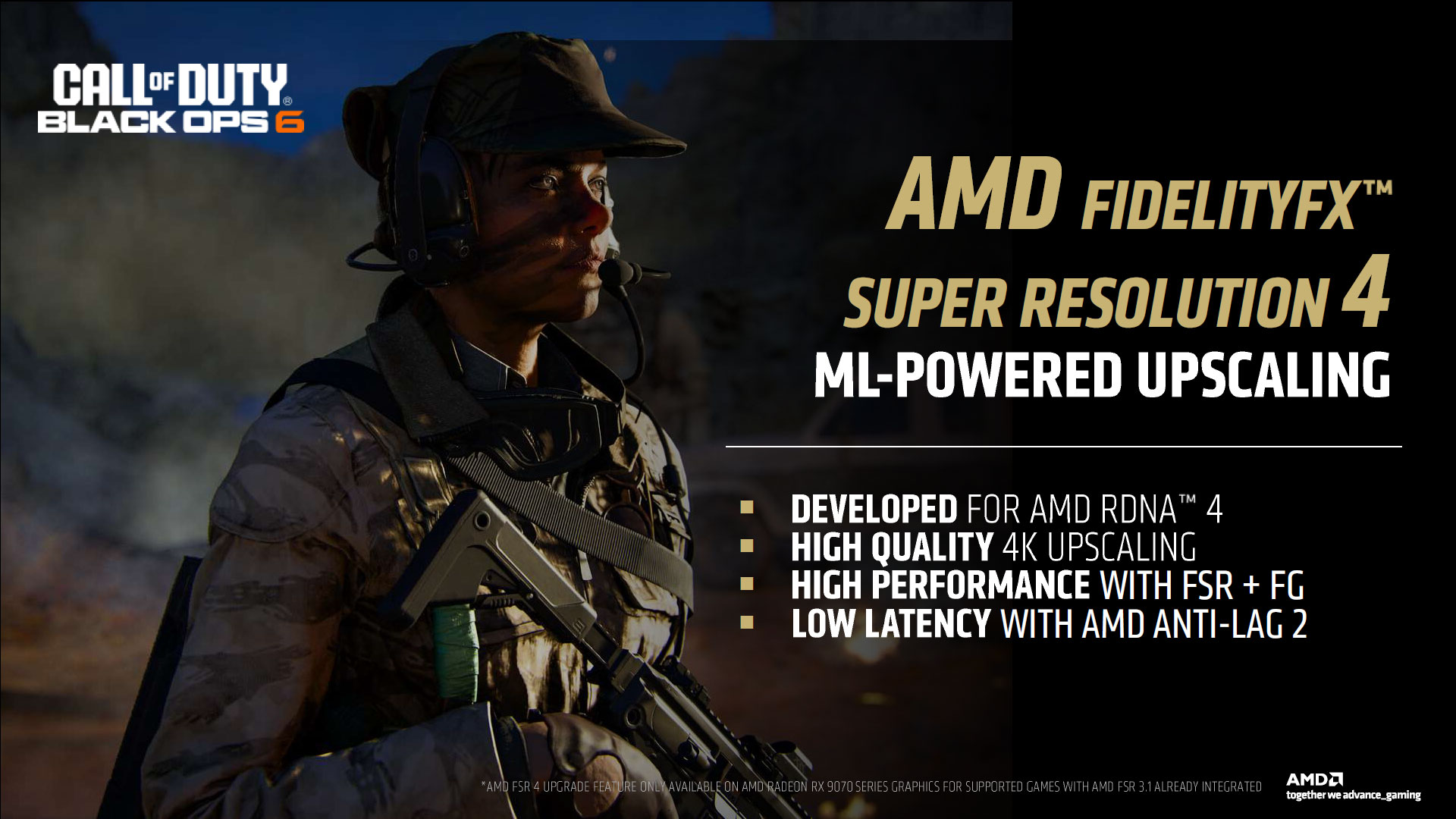In the originalAMD FSR 4reveal slide atCES2025, we learned through some tucked-away text that the “AMD FSR 4 upgrade feature (is) only available on AMDRadeonRX 9070 Series Graphics for supported games with AMD FSR 3.1 already integrated”, but exactly how this worked wasn’t explained. Now a tip from reputable industry insider @Kepler_L2 on Twitter, indicates that the RDNA 4 driver for the AMD RX 9000 Series will simply be replacing the FSR 3.1 .dll application extensions with those for FSR 4, making for a seamless upgrade on the user’s end, without requiring help from the developer.
Since AMD FSR 4 was also showcased at CES 2025 inRatchet & Clank: Rift Apartwithout a patch being needed, this tracks with what we’ve previously seen of FSR 4.

The RDNA4 driver replaces FSR 3.1 DLL with FSR4January 25, 2025
This also means that “supported games with FSR 3.1 already integrated” indeed applies toallAMD FSR 3.1-enabled games. For games that aren’t yet upgraded to support AMD FSR 3.1, it does unfortunately seem like developerswillneed to devote some resources to start supporting FSR 4 and its AI hardware-enhanced upscaling features, but once they do it seems like FSR support moving forward will be near-seamless to AMD’s ability to improve it and AMD GPU architectures.

Fortunately for future buyers of the AMD RX 9070/XT and other RX 9000 Series RDNA 4-based GPUs, this process does seem to have already started, at least for some select PlayStation-to-PC ported titles. The Tweet that originally prompted @Kepler_L2’s confirmation of how AMD FSR 4 is implemented over FSR 3.1 was coverage ofThe Last of Us Part 1being updated to support FSR 3.1, with speculation that it was done for this purpose. The likes ofGhost of TsushimaorGod of War Ragnarokhave also already gotten the AMD FSR 3.1 upgrade, too — and thus, automatic FSR 4+ injection with future AMD GPUs.
If Kepler_L2’s assertion is true, this shows just how smart AMD was to makeAMD FSR 3.1 a forward-thinking solutionthat would allow for future iterations to be seamlessly slotted in without requiring developer resources to be dedicated to manually updating the game every time a new AMD GPU architecture drops. In general, it’s always a shame to see older games still stuck on older versions of AMD’s FSR or Nvidia’s DLSS when you know your GPU could easily support a yet better-looking image upscaling implementation… but AMD seems to have solved the problem without issue this generation.
Get Tom’s Hardware’s best news and in-depth reviews, straight to your inbox.
Christopher Harper has been a successful freelance tech writer specializing in PC hardware and gaming since 2015, and ghostwrote for various B2B clients in High School before that. Outside of work, Christopher is best known to friends and rivals as an active competitive player in various eSports (particularly fighting games and arena shooters) and a purveyor of music ranging from Jimi Hendrix to Killer Mike to the Sonic Adventure 2 soundtrack.